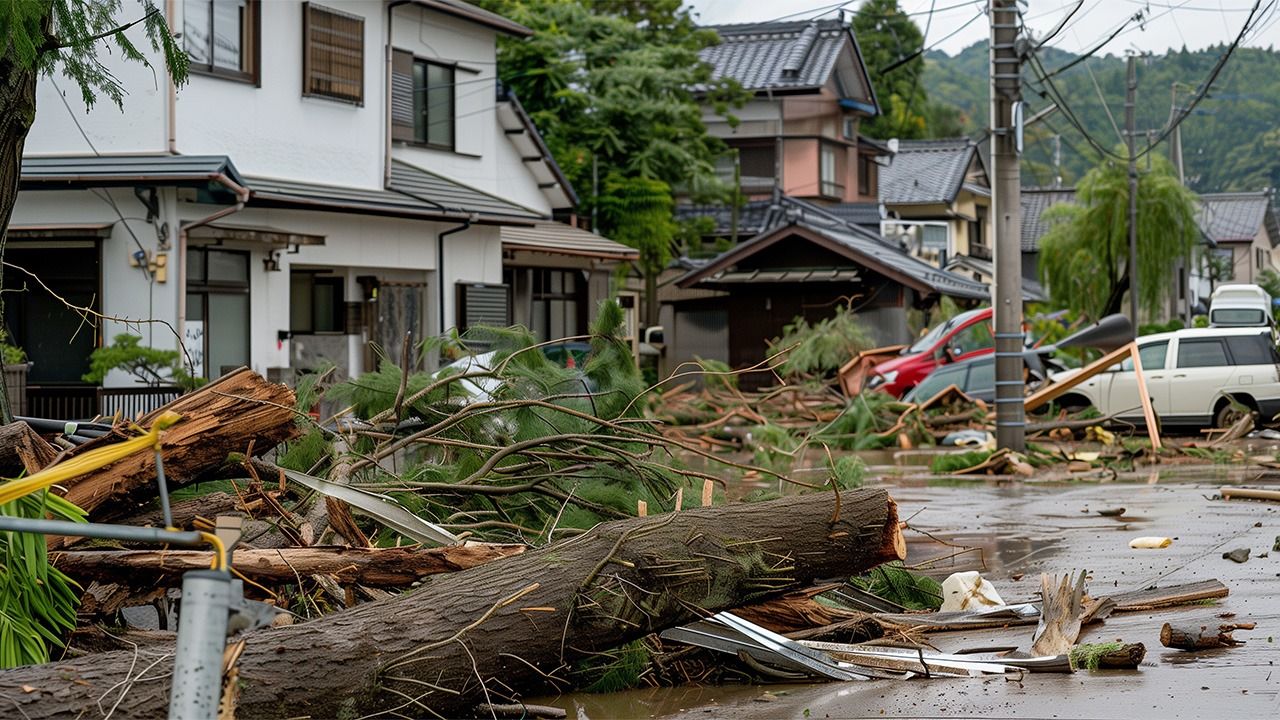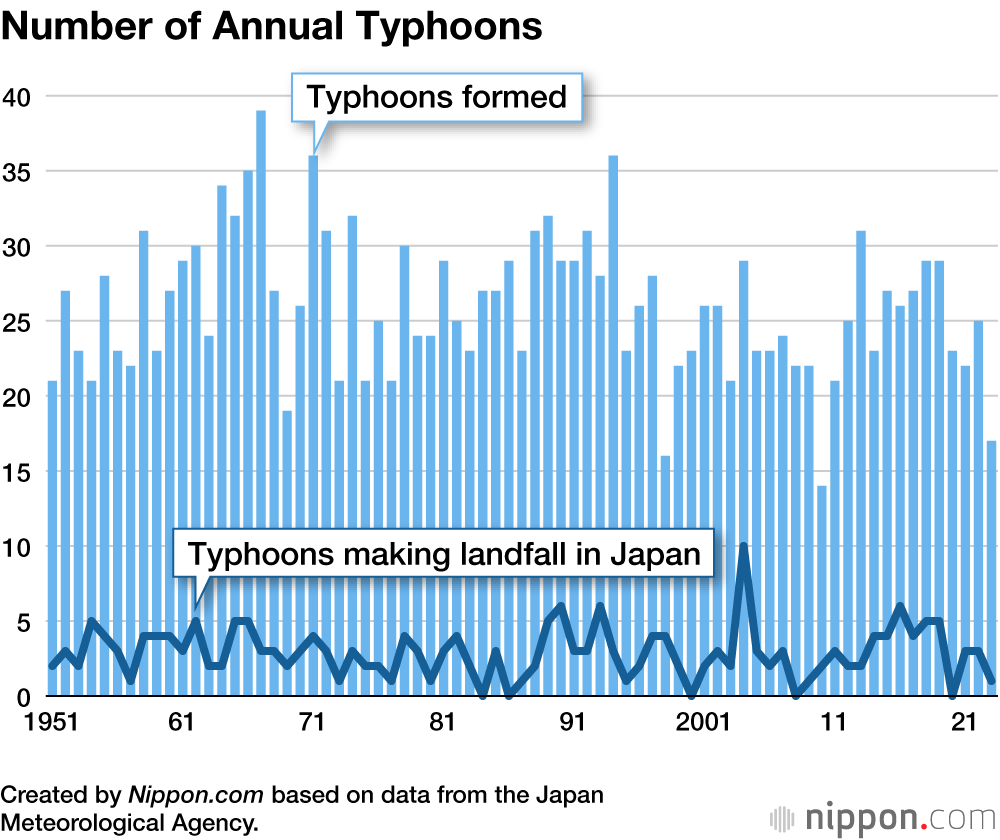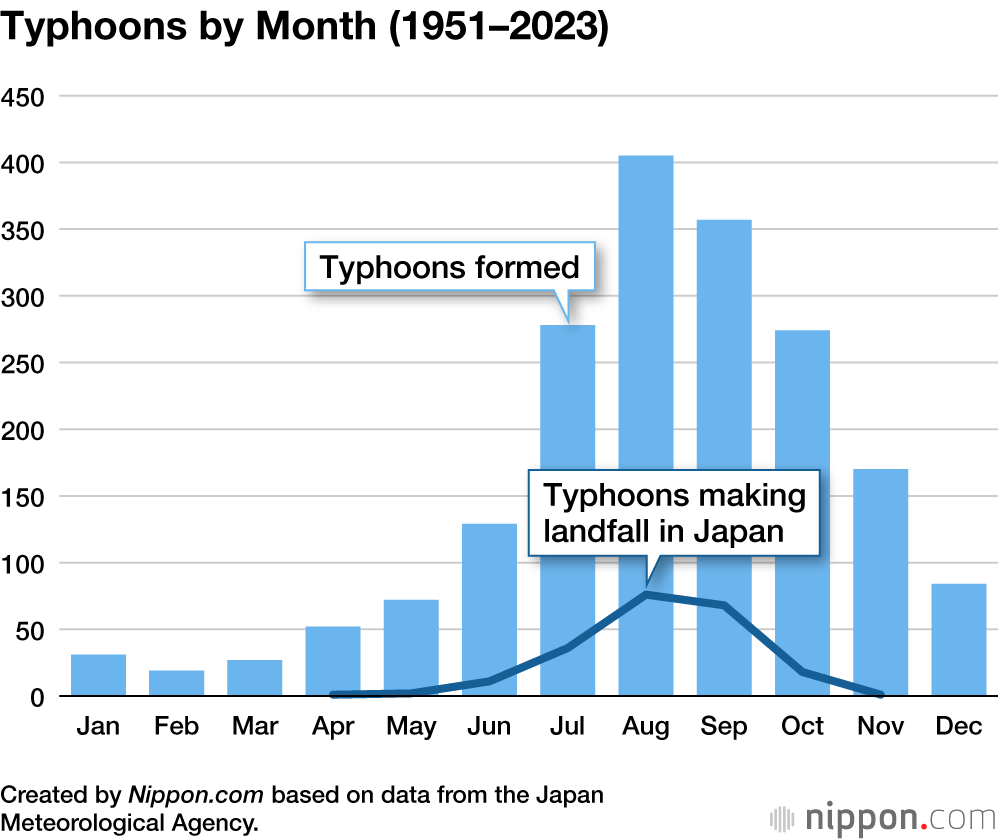
Typhoons in Japan: Warning System Provides Official Guidance
Disaster- English
- 日本語
- 简体字
- 繁體字
- Français
- Español
- العربية
- Русский
The Japanese term taifū (typhoon) is used to describe a low-pressure, generally cyclonic, system that develops over tropical waters in the Pacific Ocean and then heads toward Japan or other parts of East Asia, with maximum sustained surface winds averaging at least 17 meters per second over a period of 10 minutes. Typhoons are carried by higher altitude winds and have the tendency to head north under the influence of the Earth’s rotation. Many of the typhoons that approach the Japanese archipelago are carried by the prevailing westerly winds in a northeastern direction at high speeds. (This article is based on the Japanese definition of a typhoon, or taifū, rather than the international definition, under which taifū with slower wind speeds are labeled tropical depressions or tropical storms.)
The number of typhoons per year varies, but the annual average for the period from 1951 to 2023 was approximately 26, of which around 3 hit Japan.
Typhoons’ development is fueled by the energy released when water vapor rising from the warm ocean surface condenses into water droplets within clouds. This is why most typhoons are formed and make landfall in Japan from July to October, when ocean temperatures are higher, and this period is also when flood damage, landslides, and other related disastrous effects are greatest.
In September particularly, there are frequently stationary autumnal rain fronts near the Japanese archipelago, and if moisture-laden air flows into these fronts from a typhoon, it can increase activity and exacerbate damage.
Evacuation Guidelines
Japan’s Cabinet Office has prepared guidelines concerning evacuation in the case of disaster, encouraging people to take responsibility for their own safety and make their own decisions. This is the basis for a five-level system of warnings that appear in information from the Japan Meteorological Agency and local authorities.
| Level | Evacuation Details | Advised Action |
|---|---|---|
| 5 | Emergency Safety Measures | Life in danger. Evacuate immediately to safety. |
| Evacuation required for all at level 4 or 5 | ||
| 4 | Evacuation Order | Immediate evacuation of all residents to safety. |
| 3 | Evacuation of Elderly | Evacuate elderly and others requiring assistance. |
| 2 | Heavy Rain/Flooding/Storm Surge Advisory | Verify evacuation routes. |
| 1 | Early Advisory | Be in a state of readiness. |
Created by Nippon.com based on information from the Cabinet Office.
At level 3 (red), the elderly and others requiring assistance should evacuate, while other people should consider canceling ordinary activities and prepare to evacuate. At level 4 (purple), local authorities will order evacuation for everyone. A level 5 (black) warning is issued when a disaster is imminent or taking place, and everyone should make every effort to ensure their personal safety.
As municipalities will use the color coding when broadcasting evacuation information, it is worth remembering the different levels and taking appropriate action where necessary.
(Translated from Japanese. Banner photo © Pixta.)


